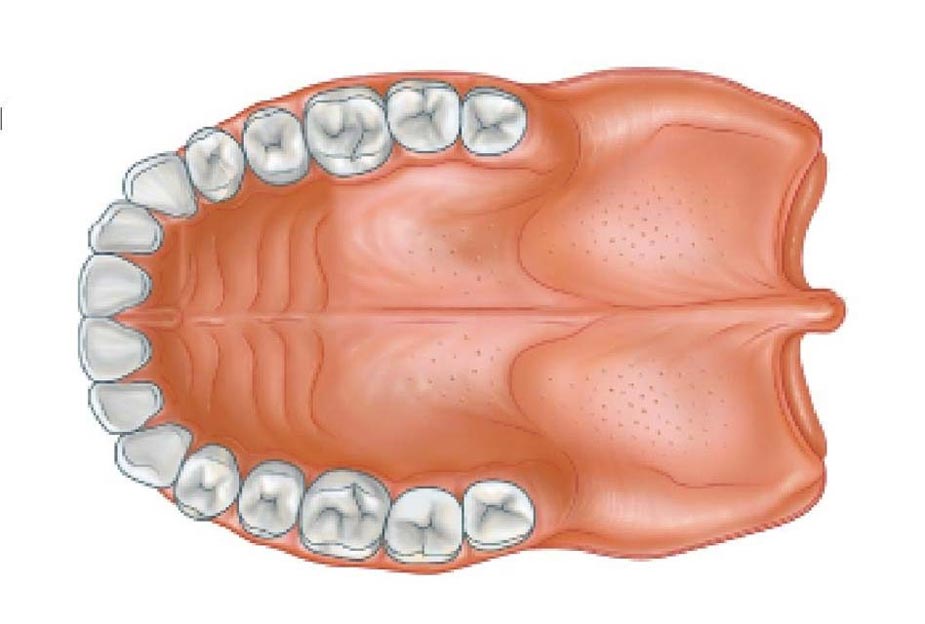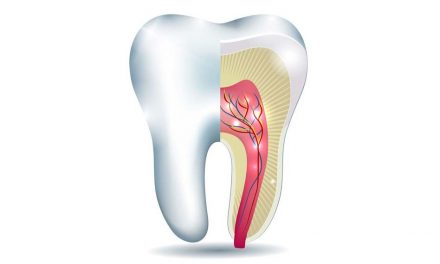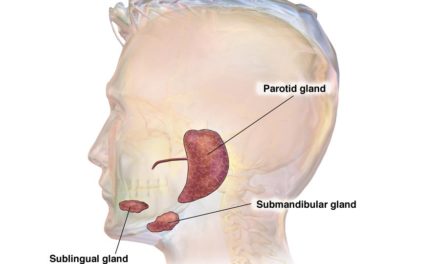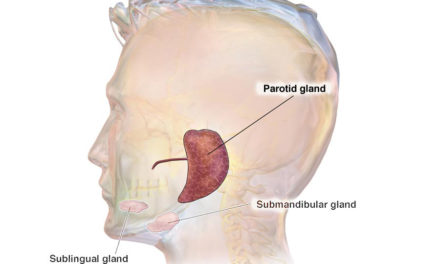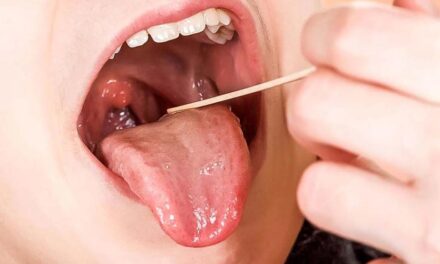Also called the muscular palate, or the velum, the soft palate is the posterior part of the palate (or roof of the mouth), which separates the oral cavity (mouth) and nasal cavities (nose). The whole palate is divided into two distinct parts: the front hard palate which is more bony, and a back soft palate that has no bone support but which is more a muscular projection that terminates with the uvula. The palate plays significant roles in swallowing, breathing and speaking.
Anatomy
The hard and the soft palate make up the whole of the palate. The hard palate has bone and holds the teeth and gums, and is positioned to the front. The soft palate is smaller and placed to the back.
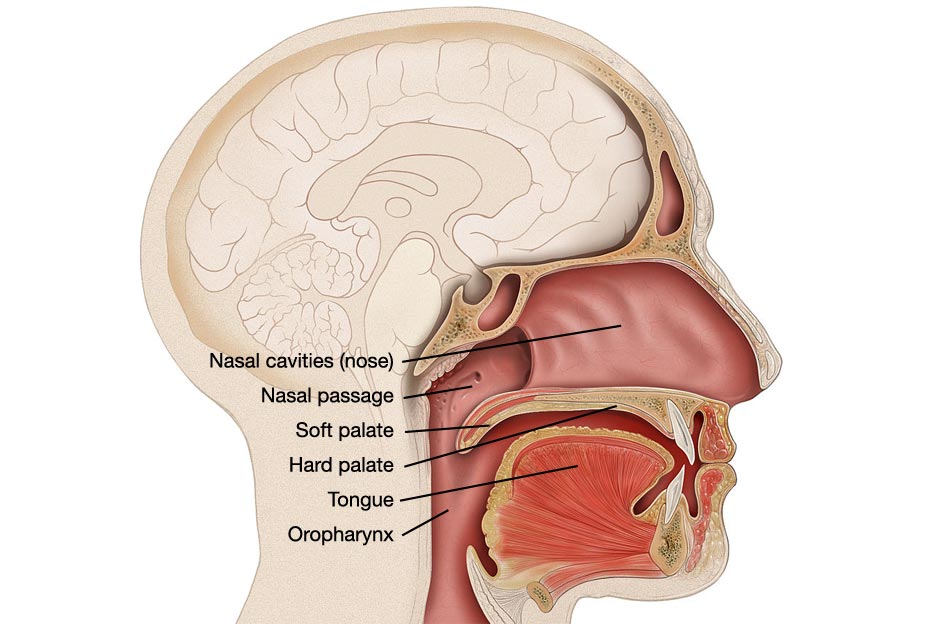 The soft palate does not contain any skeletal tissue, but is made of muscle fibres and connective tissue, which give it both mobility and support. The soft palate ends with the uvula, which is the fleshy projection that can be seen hanging down when a person opens their mouth.
The soft palate does not contain any skeletal tissue, but is made of muscle fibres and connective tissue, which give it both mobility and support. The soft palate ends with the uvula, which is the fleshy projection that can be seen hanging down when a person opens their mouth.
There are five muscles in the soft palate, and they each play important roles and functions:
- Tensor veli palatini, which is involved in swallowing.
- Palatoglossus, involved in swallowing.
- Palatopharyngeus, involved in breathing.
- Levator veli palatini, involved in swallowing.
- Musculus uvulae, which moves the uvula.
Functions
Swallowing. The mobility and flexibility of the soft palate is necessary for its function of swallowing. When people swallow, the soft palate completely separates the mouth from the throat, creating a vacuum, in order to keep food out of the nose and respiratory tract.
Breathing. The soft palate is a barrier between the digestive and the respiratory tracts, because it separates the mouth and nose. This allows a person to breathe and eat at the same time. Nevertheless, people are not able to breathe and swallow at the exact same moment.
Speaking. Pronouncing certain sounds is a complex process that involves the tongue, the lips and the palate, which produce speech by directing airflow through the mouth. While the hard palate helps for the pronunciation of the consonants such as “j”, “ch”, “d” and “t”, the soft palate takes care of consonants “g” and “k”.
Soft palate anomalies and diseases
Injury. People can injure their palate, mostly with hot food, which could develop ulcers. To ease the discomfort of the soft palate pain, people may rinse with mouthwash or with cold water. Rarely those ulcers can lead to infections, but if that is the case, they can be treated with a disinfectant mouthwash.
Cleft palate. One of the most common congenital defects that occur in babies are cleft palate and cleft lip, where individuals often have both. Cleft palate is an opening between the mouth and the nose. This happens when the left and the right portions of the palatal plates do not fuse together during child development in the womb. Cleft palate results in food entering the nose, and it also interferes with speech.. This congenital anomaly can be corrected surgically at a very young age.
Palate cancers are tumours that usually begin at the soft palate level, mostly in its front portion. These tumours are classified as a type of throat cancer. Like most other cancers of the mouth, tobacco and alcohol use are main risk factors. When palate cancer can be treated, doctors use a combination of surgery, radiation therapy and chemotherapy.
References
- Shkoukani MA, Chen M, Vong A. (Cleft Lip – A Comprehensive Review). Front Pediatr. 2013; 1: 53.
- National Institute of Dental and Craniofacial Research, (Cleft Lip & Palate).
- ResearchersNames. (ArticleTitle). JournalName JournalDate;JournalNumber.
- MayoClinic, (Soft palate cancer).
- Cedars Sinai, (Palate Cancer).
- Medical News Today, (What is the soft palate?).
- Teach Me Anatomy, (The Palate).
- Photo adapted from Patrick J. Lynch, medical illustrator.
The information above should be used as a reference only. Any medical decision should not be taken before consulting a health care professional.

